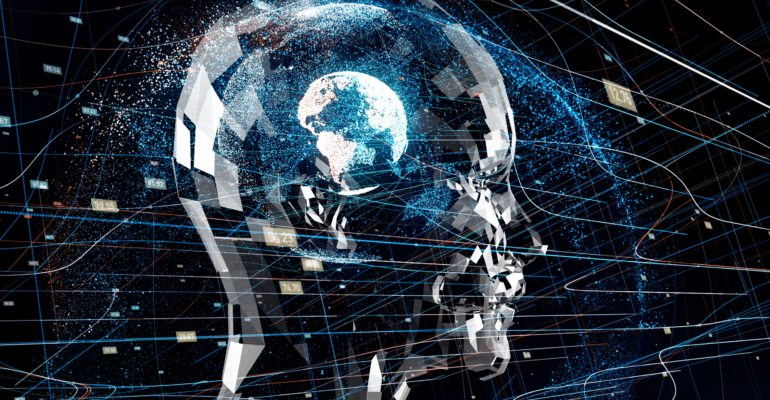How are AI & Machine Learning connected? Are they both the same or different? Find out by reading the below article.

How are AI & Machine Learning connected? Are they both the same or different? Find out by reading the below article.
The majority of people conflate concepts like artificial intelligence and machine learning, and they have no idea what they mean. Despite the fact that machine learning is a subset of artificial intelligence, these two phrases refer to two distinct concepts. Artificial intelligence can be described as a broad field of study in which machine learning is only a small portion. The following are the main distinctions between them.
Artificial intelligence is a branch of computer science that aims to create a computer system that can think like a human. It is made from of the words “artificial” and “intelligence,” which together signify “human-made thinking ability.” Artificial intelligence systems do not need to be pre-programmed; instead, they employ algorithms that function in conjunction with their own intellect. Reinforcement learning algorithms and deep learning neural networks are examples of machine learning algorithms. Machine learning, on the other hand, allows a computer system to make predictions or make judgments based on previous data without having to be explicitly programmed. Machine learning makes use of a large amount of structured and semi-structured data in order for a machine learning model to produce reliable findings or make predictions based on it. Machine learning is based on an algorithm that learns from past data on its own. It only works for restricted domains; for example, if we create a machine learning model to detect dog pictures, it will only return results for dog images; however, if we add fresh data, such as a cat image, it will become unresponsive. Machine learning is utilized in a variety of applications, including online recommendation systems, Google search algorithms, email spam filters, and Facebook Auto friend tagging suggestions, among others.
Artificial intelligence is a word with a lot of ambiguity, which contributes to the confusion between it and machine learning. Artificial intelligence is a system that appears to be intelligent. But that’s not a very good definition because it’s the equivalent of stating something is ‘healthy.’ Problem-solving, learning, and planning are examples of these behaviors, which are attained through examining data and discovering patterns in order to repeat such behaviors. Machine learning, on the other hand, is a sort of artificial intelligence in which machines take in data and learn things about the world that people would find challenging. Machine learning has the potential to go beyond human intelligence. ML is generally used to swiftly process big amounts of data using algorithms that evolve over time and improve at what they’re supposed to do. A manufacturing plant’s network may collect data from equipment and sensors in amounts far greater than any human can process. Then, using machine learning, people can notice patterns and identify anomalies, which may signal an issue that needs to be addressed. Machine learning is a method for machines to obtain information that people are unable to obtain. We don’t truly understand how our vision and language systems work, and it’s tough to explain in simple terms. As a result, we rely on data, which we provide to computers so that they can imitate what we’re doing. Machine learning accomplishes this.
Artificial intelligence (AI) is a technology that allows a computer to mimic human behavior. Machine learning is a subset of artificial intelligence that allows a machine to learn from prior data without having to design it explicitly. The goal of AI is to create a clever computer system that can solve complicated problems in the same way that people can. The purpose of machine learning is to allow machines to learn from data and produce reliable results. In AI, we create intelligent computers that can execute any task in the same way that a human can. In machine learning, we use data to train machines how to do a task and produce reliable results. The two primary subgroups of AI are machine learning and deep learning. The main subset of machine learning is deep learning. AI offers a wide range of applications. Machine learning is limited in its use. AI is attempting to develop an intelligent system capable of performing a variety of complex tasks. Machine learning aims to construct machines that can only accomplish the tasks for which they have been programmed. The AI system is focused on increasing the likelihood of success. Machine learning is primarily concerned with pattern recognition and accuracy. Siri, customer service via catboats, expert systems, online gameplay, intelligent humanoid robots, and other AI applications are among the most common. The online recommender system, Google search algorithms, Facebook auto friend tagging suggestions, and other machine learning applications are the most common.





